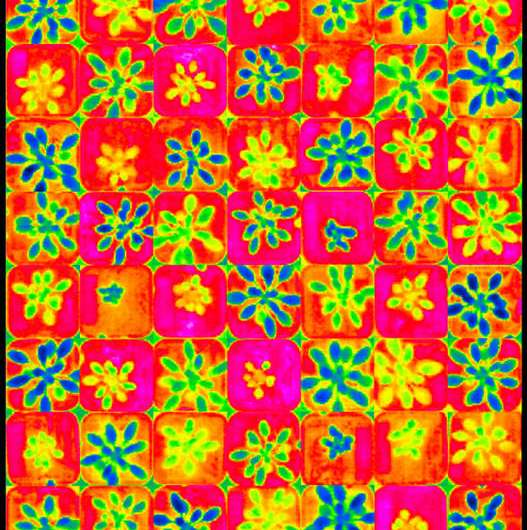Research shows how to get more crop per drop

Boosting food production with limited water availability is of great importance to humanity. However, our current water usage is already unsustainable today. The fact that plant leaves lose a great deal of water through photosynthesis is the greatest limiting factor for larger harvests worldwide. Scientists at the Technical University of Munich (TUM) have developed an approach to solving the problem: they have been able to get plants to use water more efficiently without restricting their growth. This is thanks to a plant-inherent water-conservation strategy that enables plants to absorb carbon dioxide while minimizing water loss.
Plants activate this water-conserving mode when water is scarce. TUM scientists have been able to identify the activating signal and permanently switch on this water-saving mode. This is a possible solution to resolving the issue that about 70 percent of the water consumed worldwide is utilized by the agricultural sector. Unsustainable water extraction, primarily by the agricultural sector, is lowering the continent's groundwater table. Every year, about 50 net cubic miles of water - that is approximately three times the annual water volume cascading at the Niagara Falls - is moved from land to sea, thus contributing to a rise in sea level of about 30 percent. According to the Global Agriculture Report, demand for water is three times higher today than it was 50 years ago. Future prospects: by the year 2050, demand for water in agriculture is expected to increase by another fifth.
About 80 percent of the water released into the atmosphere by land masses does not evaporate right away but travels through plant roots and sustains leaf transpiration. This makes the search for crop plants with improved water utilization a central issue for curbing the high water usage in agriculture and ensuring food security for the future.
How plants regulate gas exchange
Plants control the exchange of carbon dioxide (CO2) and water vapor through pores, referred to as stomata, located on their leaves. Closing the stomata reduces water loss but also impedes CO2 absorption. Depending on temperature and humidity, the absorption of CO2 molecules costs plants about 500 to 1,000 molecules of water. When water is scarce, however, plants are capable of reducing internal CO2 concentrations, thus making CO2 absorption more effective.
"Plants have the ability to cut water loss during CO2 absorption in half," says Erwin Grill, Professor of Botany at TUM - "but they will only switch to this water-saving mode when water is in short supply". With arable crops, plants with a perpetually activated water-saving strategy would preserve the moisture in the ground to use it for growth and survival at a later point in times of drought.
Plant hormone activates water-saving mode
As the team of TUM scientists has discovered, a plant hormone called abscisic acid is responsible for switching the water-saving mode on. This plant hormone is produced in greater quantities in times of water shortage. In the model plant Arabidopsis, also known as mouse-ear cress, there are 14 receptors responsible for perceiving this plant-specific hormone signal. The Munich researchers were able to demonstrate that increased production of some of these receptors will cause plants to switch to the water-saving mode even when water is not in short supply. The catch is that only three of the receptors did not negatively influence plant growth. Up to 40 percent of the water required previously could be saved without affecting the plant's performance.
Initial experiments show water-saving effects under simulated field conditions
"The next step is to see if these water-saving effects can also be observed under field conditions," says Hans Schnyder, Professor of Grassland Studies at TUM and co-author of the study. Initial simulation experiments conducted in phytochambers of the Helmholtz Zentrum München, German Research Center for Environmental Health, support this assumption.
"It remains to be seen if crop plants such as wheat, corn, and rice can produce more biomass with the same amount of water using this mechanism," says Professor Grill. "We are optimistic. Since the mechanisms involved are present in all plants, it should be possible to transfer these results from the model plant Arabidopsis to crop plants. This would be an important step towards ensuring future food security."
More information: Zhenyu Yang et al, Leveraging abscisic acid receptors for efficient water use in, Proceedings of the National Academy of Sciences (2016). DOI: 10.1073/pnas.1601954113
Journal information: Proceedings of the National Academy of Sciences
Provided by Technical University Munich




















